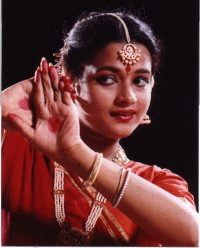Apr 20, 2024
Apr 20, 2024
Dancing is the loftiest, the most moving,
the most beautiful of the arts,
because it is no mere translation or abstraction from life;
it is life itself.
- Havelock Ellis, The Dance of Life
 Dance, be it Eastern, Western, or any genre - from Mumbai to Chicago, and London to Cape Town - is a delicate form of mind-body energetic, or gymnastics. It is, like its sporting corollary, emotion in motion - the difference being of degree. Which explains why a dancer has to apply a torque, or twisting force - to ‘mind’ the body, and ‘bend’ the mind, as it were.
Dance, be it Eastern, Western, or any genre - from Mumbai to Chicago, and London to Cape Town - is a delicate form of mind-body energetic, or gymnastics. It is, like its sporting corollary, emotion in motion - the difference being of degree. Which explains why a dancer has to apply a torque, or twisting force - to ‘mind’ the body, and ‘bend’ the mind, as it were.
And, once a dancer is ‘in the zone,’ a la the athletic sensitivity, or what noted psychologist Mihaly Csikszentmihalyi calls the ‘flow,’ there’s no need to apply the twisting force. Or, so you thought? Maybe; maybe, not. But, better be careful! Because, if you - more so, for a dancer - begin twisting from the ground-up, clutching your lower extremities together while raising your arms, you’ll do a rapid full-scale turn - or, what maybe called aerobic exercise!
Now, to the basic premise of this write-up. Science can, quite simply, help a dancer understand why bringing one’s physical and emotional constructs together will let one complete a grand step, or the Indian mudra.
Agreed that torque may not always be a case in point. More so, because a dancer’s angular momentum is his/her rate of movement multiplied by his/her ‘flash’ of inertia, which depends on how his/her mass is distributed around his/her dance, ormudra, axis. And, if his/her momentum remains the same, but s/he reduces her inertia, s/he must move faster. That’s, again, science. Or, more precisely - physics.
Another classic move is the nritya, in Sanskrit, or the straightforward gazelle-like leap in Western dance. You have a ‘hang-time’ once you are through with it. Also, as the dancer leaves the floor, s/he's like a nuclear missile: his/her centre of gravity follows a fixed parabola. S/he can't change it, but s/he can move parts of his/her body. And, when s/he also clippers his/her feet open as s/he nears the top of the arc, s/he makes them take up most of his/her centre of gravity's vertical motion. Which gives the audience an impression that s/he’s floating in the air!
Not only that. The upkeep of angular momentum is also, perhaps, the most important physical principle in dance. However, there’s more to dance than intensity, or sensitivity, which is best expressed in the East’s most traditional idiom -abhinaya.
This is not all. What’s more, a dancer’s lower axis, including the limbs, legs and feet, has what’s called the storing momentum. During each pause, the dancer regains momentum by coming down off point and pushing again with his/her whole supporting foot. Also, s/he saves some momentum from one clip to the next. And, to store momentum, s/he hustles it straight out, far from his/her expressive axis, as s/he faces the camera, or audience - to transfer momentum back to his/her body. The whole thing’s subtly fluid, also physically sensible, beautiful and economical. In other words, it’s pure nectar - in expression and form.
There’s also, of course, the preservation of angular momentum with dance, as already cited. Hence, to execute the full turn a dancer has to bring his/her feet in line with his/her torso - and, then hold them there. And, when a dancer goes into the ‘seventh heaven’ of his/her recital, s/he feels like being ‘up in the air,’ as cited elsewhere, what with his/her feet and arms dictating their own essence of movement in the alignment of rotation.
It’s magic to the dancer, you, me, and everybody around. It’s also science - at its artistic best.
16-Apr-2006
More by : Rajgopal Nidamboor